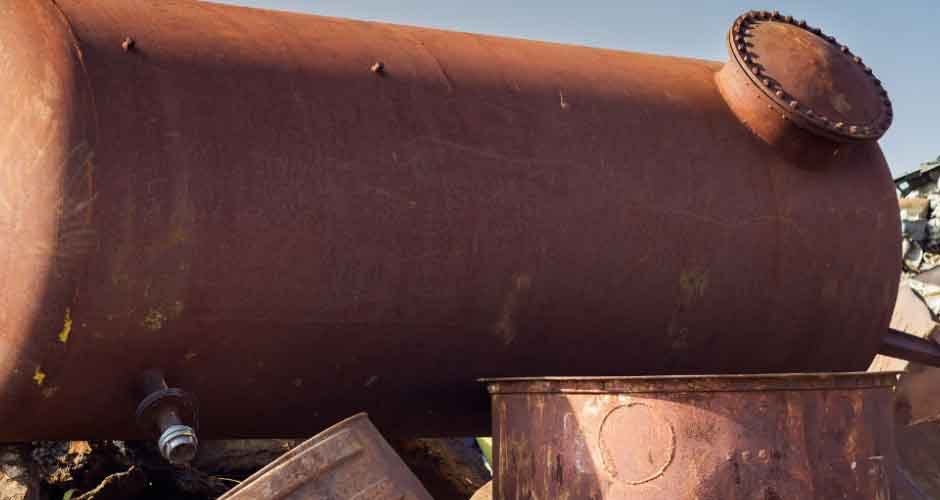Underground Storage Tanks (USTs) play a crucial role in storing petroleum products, chemicals, and hazardous substances. Across the U.S., around 212,000 sites hold approximately 590,000 underground storage tanks. Ensuring the integrity of USTs is of utmost importance to prevent leaks, spills, and environmental contamination. Since leakage in these tanks can be catastrophic, several guidelines and standards are put in place to regulate tank leakage and spill incidents. Environmental Protection Agency has made it mandatory for tank facility owners and operators to install leak detection or release detection to detect leakage in tanks. Early leak detection not only prevents the tank’s content from spilling but also averts any chances of soil and water contamination. Regular API tank inspection for tank tightness is essential to identify potential issues early on and address them before they escalate into costly and hazardous situations.
In this blog, we will explore the process of testing UST tightness using industry standards, with a particular focus on API tank inspection and certified tank inspections.
Why Testing UST Tightness Matters?
As per a report, as of 2010, over 419,000 USTs were confirmed to be leaking. While 395,000 sites have been cleaned up, there are approximately 64,000 leaking storage tanks that are being constantly monitored and regulated.
A leaking underground storage tank poses the threat of groundwater contamination and other environmental and health hazards. There is a significant threat to the soil and groundwater surrounding the leaking underground storage tank. It can also result in substantial financial liabilities, including cleanup costs, fines, and legal penalties.
When it comes to the maintenance, upkeep, and compliance of underground storage tanks, tank tightness and inspection plays a crucial role. Regular tightness testing is vital to identifying potential leaks, assessing the tank’s condition, and verifying its compliance with industry standards. Tank owners can ensure safe and reliable operations by detecting and resolving issues promptly while mitigating potential risks and liabilities.
Types of UST Tightness Testing
There are several methods for testing the tightness of USTs, each with its advantages and limitations. Two widely recognized and accepted testing methods are:
- API Tank Inspection
API (American Petroleum Institute) tank inspection involves comprehensive assessments of aboveground and underground storage tanks, including USTs. The API inspection standard focuses on safety, structural integrity, and environmental protection.
For UST tightness testing, API 653, the “Tank Inspection, Repair, Alteration, and Reconstruction” standard, is the relevant guideline. It provides guidelines for inspecting, repairing, and ensuring the integrity of storage tanks, including USTs. The standard emphasizes visual inspections, ultrasonic testing, and leak testing to evaluate tank tightness and integrity.
- Certified Tank Inspections
Certified tank inspections involve assessments conducted by trained and qualified professionals to verify the tightness and compliance of USTs with relevant regulations. The certification process ensures that the inspection is performed by knowledgeable experts who adhere to industry best practices.
Certified tank inspections often follow the guidelines and protocols outlined by regulatory agencies, such as the Environmental Protection Agency (EPA) in the United States. These inspections typically include visual inspections, tank tightness tests, and evaluations of the tank’s structural integrity and protective measures.
Methods of UST Tightness Testing
- Automatic Tank Gauging (ATG)
Automatic Tank Gauging is a common method used for continuous monitoring of USTs. ATG systems employ sensors and probes to measure the liquid levels and temperatures within the tank. Any significant variations in liquid levels beyond expected patterns can indicate potential leaks or issues with tank tightness.
- Statistical Inventory Reconciliation (SIR)
SIR is a statistical method that compares the amount of product entering and leaving the tank with the change in inventory over time. SIR analysis detects discrepancies that may indicate potential leaks or issues with UST tightness. Regular SIR analysis can help identify trends and patterns in tank behavior, allowing for proactive maintenance and monitoring.
- Tank Vacuum Testing
Tank vacuum testing involves creating a vacuum in the UST and monitoring for pressure changes over a designated period. Any increase in pressure could indicate a leak or integrity issue within the tank.
- Groundwater Monitoring
Groundwater monitoring involves monitoring the groundwater near the UST for any signs of contamination. Elevated levels of contaminants in groundwater can indicate a potential leak in the tank.
Testing UST tightness is a critical component of tank maintenance and environmental protection. Regular testing helps identify potential leaks and integrity issues, enabling timely interventions and reducing the risk of environmental contamination and costly liabilities. Two widely accepted methods for UST tightness testing are API tank inspection and certified tank inspections. Following industry standards and regulatory guidelines, these assessments ensure that USTs remain safe, compliant, and reliable.
By adhering to industry standards such as API 653 and employing certified tank inspectors, tank owners can be confident in the integrity of their USTs. Additionally, utilizing methods like ATG, SIR, tank vacuum testing, and groundwater monitoring ensures a comprehensive and proactive approach to UST tightness testing. With a commitment to regular testing and compliance, UST operators can safeguard the environment, protect public health, and maintain the longevity and efficiency of their underground storage tanks.






